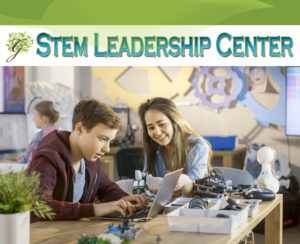Children can and do change the world. They recognize injustice, they experience fear and anger. The father of the Buddha tried to protect him from all suffering, injustice, and anguish. He created a beautiful bubble for him, a bubble of plenty of sweet food, no harsh words, no sickness, no poverty, and no loss. The reaction of the Buddha when these things finally burst into his life was a spiritual awakening that had him define life as suffering and quest after a spiritual path to escape suffering with strict aesthetic practice (prayer, fasting and self-mortification) and enlightenment under the Bodhi tree.
My choice (and it is a parent’s choice- some parents can make other choices and we can have a world of delightfully diverse people), my choice is to allow my child the experience of injustice, fear and anger even when they are young. Don’t get me wrong, we enjoy our share of fantasy bubbles. And don’t mistake my desire to allow them to experience injustice as a justification to cause it. There is already plenty to go around.
Leaving a morning newspaper our for their kids, the Kielburger’s left open the possibility that their children would stumble upon stories of war and theft and murder as they leafed through on their way to the comics. And they did stumble. Craig, at age 12, found the story of Iqbal Masih, a Pakastani boy killed for speaking up against child slavery. His outrage at the injustice led him to found Free the Children, an organization which now has 1.7 million youth involved in innovative education and development programs in 45 countries (including Pakistan).
Malala Yousafzai was a young 14 year old girl, labeled a child activist, who was (and is) a symbol of resistance against the Taliban has filled the news lately. Malala was 11 when she began writing a diary for BBC Urdu. She wrote the blog (under a pen name) against the Taliban that had closed her school, a school where she had learned to speak English and dreamed of becoming a doctor. Her blog led her to become the subject of a documentary and a very young spokeswoman for girls’ access to education. Ms. Yousafzai was shot by the Taliban while riding a school bus on Oct. 9, shot “at point-blank range” on the upper left side of her head, with the bullet traveling under her skin without penetrating the skull as it coursed the length of her head, through her neck and into her left shoulder. The shock wave from the bullet “shattered the thinnest bone of the skull,” it said, “and fragments were driven into the brain.” The Taliban continues to threaten her life and she was flown to the United Kingdom for surgery and treatments and continues a long road to recovery.
Greg Mortenson, the author of Three Cups of Tea and Stones into Schools, writes that Malala’s is sadly not an isolated story. His organization, the Central Asia Institute (that has been cleared of all accusations of financial mismanagement), has worked with communities in the remote and war ravaged areas of Pakistan and Afghanistan since 1996 to establish over 300 educational and community support initiatives. Mortenson describes, “Girls attending classes are gassed and poisoned. Girls are attacked on their way to and from school. In Pakistan, militants destroyed 440 schools, including 130 all-girls’ schools, last year. In Afghanistan, several dozen teachers have been murdered for teaching at girls’ schools, including a teacher at the CAI school in Saw, in Kunar Province (Afghanistan), this past summer.”
Have you talked to your child about Malala? Do you allow the sad realities of the world to touch them? The recent We Days in Canada invited tens of thousands of children to gather and commit themselves to working to end injustice. Speakers took the stage at stadiums packed with 20 and 30 thousand youth to address child slavery, gendercide, poverty, child soldiers, environmental disasters, and ways to make a difference. Kids involved in making a difference in the world boast a stronger sense of identity, an enthusiasm for learning, and sense of purpose.
Malala’s dream of becoming a doctor was replaced by a dream of a country where education would prevail. Craig’s dream of fruit loops and comics was replaced by the dream of freeing children from poverty and from apathy, freeing them from any obstacle that kept them from living a life of meaning and purpose.
I invite you to ask your (grand)child and record for when they are older:
MY CHILDHOOD DREAMS
List ten dreams for the future (dream big!)
What kind of career(s) do you think you want?
What places do you want to travel to (don’t limit yourself to earth).
Who do you want to meet?
What skills do you want to know how to do?
Who are your heroes? What three words describe them? Do you want to become more like them?
If you could travel to anytime in history, when would it be?
If you could write a book, what would it be about? Do you want to write a book?
If you could make a movie, what would it be about? Do you want to make a movie?
If you could make a video game, what would it be about? Do you want to make a video game?
If you could change the world to make it more beautiful and just, what would you create?
Purchase today the paperback or e-book version of the Grow a Generation handbook Writing a Purpose Statement to record your child’s dreams and help them develop goals and objectives to reach their dreams. Revisit your own and let me know what how they’ve come true!



